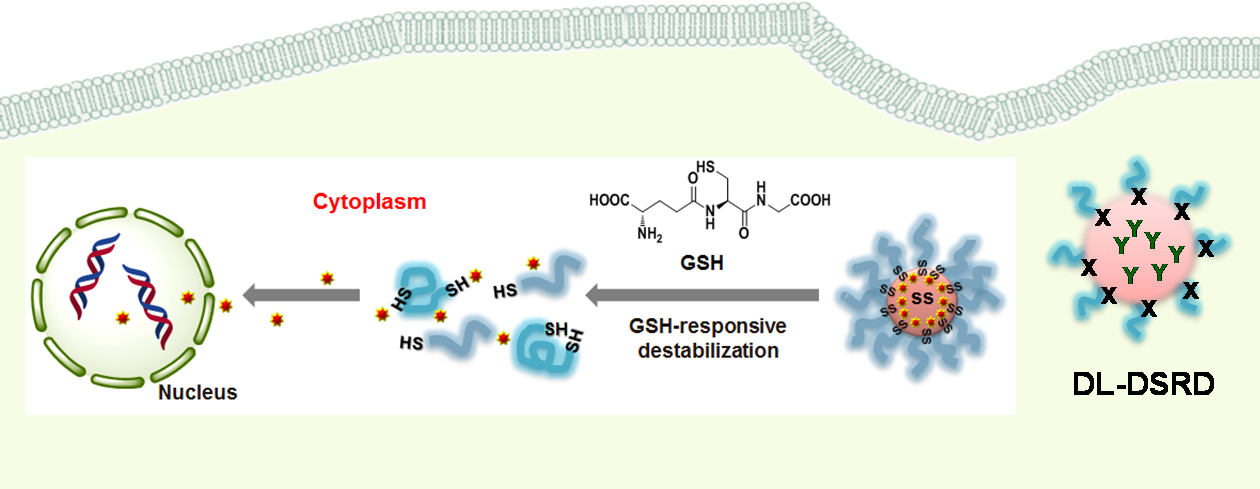RESEARCH
Research I. SRD-exhibiting drug delivery nanoassemblies
Self-assembled nanocarriers based on amphiphilic block copolymers offer a broad choice of materials for drug delivery applications. However, it has been an ongoing challenge to offer controlled release of drugs or genes in targeted cells for the treatment of diseases such as cancer.
Our group has developed various strategies to synthesize novel reduction-responsive degradable block copolymers and their nanoassemblies. They have been designed with varying densities of disulfide linkages positioned at single and dual locations, as in micellar cores and at interfaces of cores and coronas. With our great success in single or dual location reduction-responsive degradation strategies, our recent focus is on the exploration of dual location dual or multiple stimuli-responsive degradation (DL-DSRD or MSRD) strategy. This strategy offer several features. Not only each stimulus can independently and precisely regulate the release of payload upon the degradation, but also the combined stimuli can facilitate synergistic/accelerated drug release at dual locations.
Understanding the structure-property relationship between morphological variance and stimuli-responsive degradation will allow us to optimize degradable micelles towards the tunable release of encapsulated therapeutics inside targeted cells.



